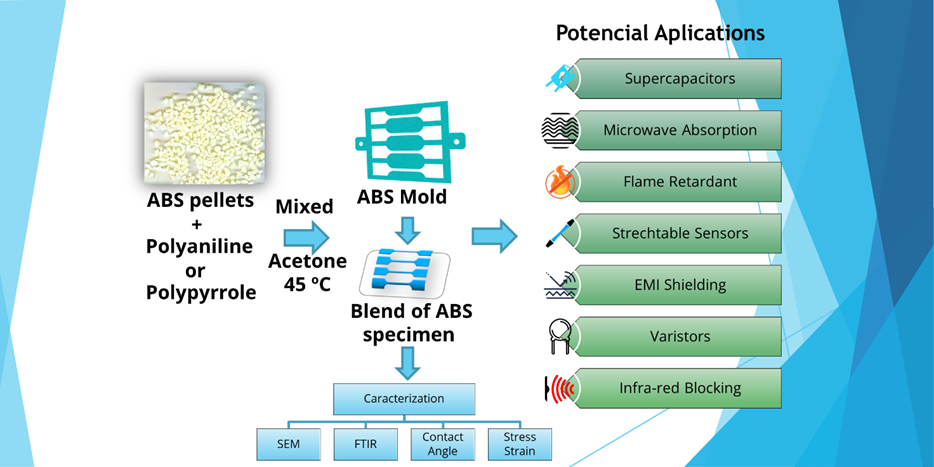Preparation and Characterization of Blends with Small Amounts of Polyaniline and Polypyrrole Mixed with ABS Copolymer Matrix

- ABS copolymer,
- composites,
- Polyaniline,
- Polypyrrole,
- electrical conductivity
- mechanical properties ...More
Copyright (c) 2024 Orbital: The Electronic Journal of Chemistry

This work is licensed under a Creative Commons Attribution-NonCommercial-NoDerivatives 4.0 International License.
Abstract
In this study, ABS copolymers were blended with doped polyaniline (PAni) and undoped polypyrrole (PPy) at concentrations of up to 2.5 % by weight. This allowed to understand how the mechanical and electrical resistivity properties of the ABS copolymer were affected by small quantities of these polymers. Scanning electron microscopy revealed that even with the smallest amounts of PAni or PPy added, significant morphological changes occur. The contact angle values revealed that there is a different limit in the addition of PAni or PPy to maximize the dispersive component effect. Mechanical analysis of the composites indicated that the addition of 0.625 % and 1.25 % PPy produced the highest values of Toughness, 3.87 MJ m-3 and 3.89 MJ m-3, respectively. The stress at rupture varied from 57 to 61 MPa for ABS-PAni composites and from 25 to 61 MPa for ABS-PPy composites. In addition, the strain at break of ABS-PAni composites ranged from 4 to 7 %, while that of ABS-PPy composites varied from 5 to 12 %. Both ABS-PAni and ABS-PPy composites did not reveal significant changes by Thermogravimetric analysis (TGA). Finally, the electrical conductivity (σ) of the composites increased six and eleven-fold, respectively, upon the addition of 2.5 % of doped PAni or undoped PPy, which were considered significant changes.





